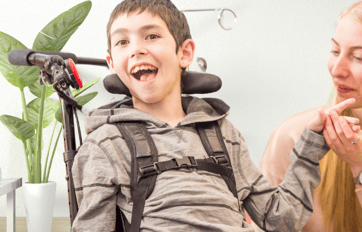Kid's Corner
Welcome to Kid's Corner, your go-to resource for understanding assistive technology for kids and how it can enhance the lives of children with a diverse degree of difficulties or disabilities.
At inclusiveworld.blog, we are dedicated to evaluating both existing and innovative assistive technology products and providing expert recommendations to help parents and caregivers make informed decisions.
Your Guide to navigate Assistive Technology
"Children with different abilities should enjoy a full and decent life, in conditions that ensure dignity, promote self-reliance, and facilitate active participation in the community".
Article 23, Convention on the Rights of the Child , 1989.
Our Mission
inclusiveworld.blog is committed to helping parents and caregivers navigate the vast world of assistive technology. Our mission is to:
Evaluate: Provide in-depth evaluations of both existing and innovative assistive technology products based on usability, effectiveness, and safety.
Recommend: Offer tailored recommendations to meet the specific needs of each child.
Educate: Raise awareness about the benefits of assistive technology and how it can transform lives.
Explore our detailed reviews and expert advice on how to choose assistive devices for children and find the best assistive technology for kids at inclusiveworld.blog. Together, we can create an inclusive world where every child has the tools they need to thrive.
Our Kids, Our Future
Daily living aids are designed to assist with a variety of activities that are essential for daily self-care and independence. These activities, often referred to as Activities of Daily Living (ADLs), include a range of tasks necessary for maintaining personal well-being.
Bathing and Personal Hygiene: Tools like shower chairs, bath benches, and long-handled sponges help individuals maintain personal cleanliness.
Dressing: Adaptive clothing, button hooks, and dressing sticks assist with putting on and taking off clothes.
Toileting: Raised toilet seats, toilet safety frames, and commodes support safe and independent use of the toilet.
Transferring: Devices like transfer benches, hoists, and slide boards help individuals move from one position to another, such as from a bed to a chair.
Mobility: Walkers, canes, wheelchairs, and ramps aid in moving around the home or outside.
Feeding Aids: Adaptive utensils, non-slip mats, and plate guards make eating easier and safer.
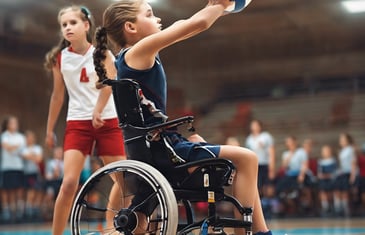

Mobility Aids
Mobility aids are essential tools which are specifically designed to accommodate children's sizes and needs. They provide support, balance, and stability, allowing kids to participate in daily activities, play, and interact with their environment more easily. Here are some common mobility aids:
Wheelchairs for Children:
Pediatric Manual Wheelchairs: Lightweight and customizable in size and color.
Pediatric Power Wheelchairs: Electrically powered, providing independence and easy maneuverability.
Transport Wheelchairs: Lightweight and ideal for short-term use or travel.
Sports Wheelchairs: Built for athletic activities with a lightweight frame.
Walkers for Children:
Pediatric Standard Walkers: Stable support with no wheels, featuring rubber tips for traction.
Two-Wheel Walkers: Easier movement with wheels on the front legs.
Four-Wheel Walkers (Rollators): Equipped with wheels on all legs, brakes, and often a seat for higher mobility support.
Gait Trainers: Provide extensive support and assistance with walking.
Canes for Children:
Single Point Canes: Basic design for mild support.
Quad Canes: Increased stability with four small feet.
Adjustable Canes: Height-adjustable to fit the growing needs.
Folding Canes: Compact and easy to carry, perfect for travel.
Crutches for Children:
Underarm Crutches: Traditional design, placed under the armpits.
Forearm Crutches (Lofstrand Crutches): Provide more support for long-term use.
Platform Crutches: Designed for children who cannot bear weight on their hands or wrists.
Adjustable Crutches: Height-adjustable to accommodate the child's growth.
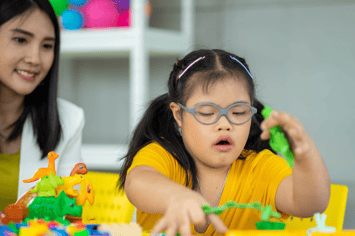

Play and Learn Aids
Designed to support children with disabilities in engaging in play activities, which are crucial for their development and social interactions.
Adaptive Toys:
Switch-Activated Toys: Toys that can be operated with a simple switch, ideal for children with limited mobility.
Large-Handled Toys: Toys with oversized handles for easier gripping, suitable for children with fine motor skill challenges.
Adaptive Building Blocks: Blocks designed for easier manipulation, such as LEGO DUPLO.
Interactive Playsets: Playsets that enhance hand-eye coordination and reflexes, like the Infinite Loop Playset.
Sensory Tools:
Weighted Blankets: Provide deep pressure to help with sensory regulation.
Noise-Canceling Headphones: Help children with auditory sensitivities.
Sensory Mats: Textured mats that provide tactile stimulation.
Fidget Toys: Items like stress balls or fidget spinners to help with focus and anxiety reduction.
Learning Devices:
Text-to-Speech Devices: Assist children with reading difficulties by converting text into spoken words.
Assistive Writing Tools: Tools like pencil grips or slant boards to aid in writing.
Interactive Learning Apps: Apps designed to support various learning needs, such as math or language apps.
Visual Timers: Help children with time management and transitions.
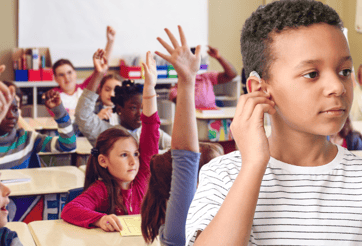

Essential devices designed to improve hearing abilities for children with hearing loss. These small, powerful devices amplify sound, helping kids hear more clearly and participate fully in conversations, learning, and play. Tailored to fit comfortably and securely, hearing aids support speech development and social interactions.
Hearing Aids
Behind-the-Ear (BTE) Hearing Aids: These are worn behind the ear and are suitable for a wide range of hearing losses.
In-the-Ear (ITE) Hearing Aids: Custom-fitted to sit within the ear canal, these are less visible and can be easier to handle.
In-the-Canal (ITC) Hearing Aids: Slightly larger than completely-in-the-canal (CIC) aids, they are less visible and provide better amplification.
Completely-in-the-Canal (CIC) Hearing Aids: These are almost invisible and fit entirely within the ear canal.
Receiver-in-Canal (RIC) Hearing Aids: Similar to BTE aids but with the receiver placed inside the ear canal, providing a more natural sound quality.
Cochlear Implants: Surgically implanted devices that bypass damaged parts of the ear and directly stimulate the auditory nerve.
Assistive Listening Devices (ALDs)
Hearing Loops: Systems that use electromagnetic energy to transmit sound directly to hearing aids or cochlear implants.
Frequency-Modulated (FM) Systems: Use radio waves to transmit sound from a microphone to a receiver worn by the user.
Infrared Systems: Used in places like theaters and classrooms to transmit sound directly to the user's hearing aid or receiver.
Alerting Devices
Visual Alerting Devices: Use visual signals, such as flashing lights, to alert individuals with hearing loss to events like doorbells, phone calls, or alarms.
Vibrating Alerting Devices: Provide tactile alerts through vibrations for events like doorbells, alarms, or notifications.
Communication Devices
Captioned Telephones: Telephones with built-in captioning to display spoken words as text.
Text-to-Speech Devices: Devices that convert written text into spoken words, aiding communication for those with hearing loss.
Hearing Aid Accessories
Hearing Aid Domes: Different types of domes that can be attached to hearing aids to improve comfort and sound quality.
Hearing Aid Dryers: Devices that help keep hearing aids dry and free from moisture.
These categories of assistive technology are designed to cater to the diverse needs of individuals with hearing loss, ensuring they can communicate effectively and participate fully in daily activities.


Designed to help children with visual impairments navigate their world more easily. These aids include magnifiers, electronic readers, large-print books, and specialized software. They enhance the ability to read, write, and recognize objects, significantly improving academic performance and daily activities. By supporting visual development, these aids empower children to participate more fully in school and play, fostering independence and confidence in their abilities.
Magnifiers
Handheld Magnifiers: Portable and easy to use, ideal for reading and inspecting small objects.
Stand Magnifiers: Provide hands-free magnification, great for reading or detailed work.
Electronic Magnifiers: Use a camera to display magnified images on a screen, offering adjustable magnification levels and contrast settings.
Electronic Readers
Portable Electronic Readers: Compact devices that can read text aloud or display it in larger print.
Desktop Electronic Readers: Larger devices with bigger screens for comfortable reading at home or school.
Tablet and Smartphone Apps: Applications that convert text to speech or enhance text visibility, available on personal devices.
Large-Print Books
Printed Large-Print Books: Books published with larger fonts to make reading easier for children with low vision.
Digital Large-Print Books: E-books that can be adjusted to display larger text on e-readers, tablets, or computers.
Large-Print Educational Materials: Textbooks and learning resources designed with large print for academic use.
Specialized Software
Screen Readers: Software that reads text displayed on the screen aloud, useful for computers and mobile devices.
Magnification Software: Programs that enlarge the content on computer screens, allowing for easier navigation and reading.
Speech Recognition Software: Allows children to control their devices and input text using voice commands.
Learning and Educational Software: Interactive programs designed to support various learning needs, often with features like text enlargement and audio support.
These aids ensure that children can achieve their full potential in both academic and social settings, promoting confidence, independence, and a love for learning.
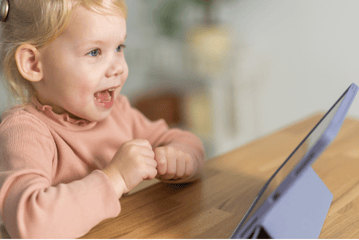

Communication aids for kids are tools designed to help children with speech or language impairments express themselves more effectively. These aids include speech-generating devices, picture boards, and apps that translate text to speech. By facilitating clearer communication, these tools enhance social interactions, learning, and overall participation in daily activities.
They are tailored to individual needs, promoting confidence and independence, and ensuring that children can communicate their thoughts and needs effectively with those around them. Keywords to focus on include communication aids for kids, speech-generating devices, and apps for speech impairments.
Types of Communication Aids
Speech-Generating Devices (SGDs): Portable devices that produce speech output, allowing children to verbalize thoughts and needs.
Picture Boards: Visual tools with images that children can point to, helping them communicate non-verbally.
Text-to-Speech Apps: Applications that convert written text into spoken words, available on tablets and smartphones.
Communication Apps: Apps specifically designed to assist with speech and language development, often featuring customizable interfaces.
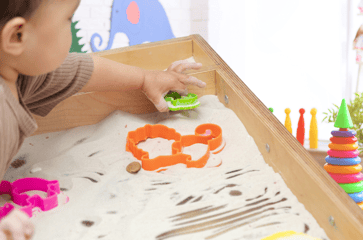

Tools designed to support sensory processing and development. These aids include items like weighted blankets, sensory bins, tactile toys, and noise-canceling headphones. They help children manage sensory overload, enhance focus, and improve their ability to interact with their environment.
By providing calming and stimulating experiences, sensory aids promote better emotional regulation, reduce anxiety, and support overall well-being, allowing children to thrive in daily activities.
Types of Sensory Aids
Weighted Blankets: Provide deep pressure stimulation, helping to calm children and improve sleep.
Sensory Bins: Containers filled with materials like rice, beans, or sand to provide tactile stimulation.
Tactile Toys: Items with different textures, such as fidget spinners or stress balls, that help children focus and reduce anxiety.
Noise-Canceling Headphones: Help children with auditory sensitivities by reducing background noise and creating a quieter environment.
Incorporating these aids into their daily routines can help children with disabilities manage sensory challenges and achieve their full potential in both academic and social settings. These tools ensure better emotional regulation, reduced anxiety, and enhanced overall well-being.
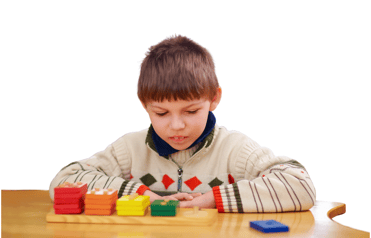

Cognitive aids for kids with disabilities are tools designed to support and enhance cognitive development and learning. These aids include memory aids, organizational tools, adaptive educational software, and interactive apps. They help children with tasks such as planning, problem-solving, and retaining information. By providing structured support, these aids help children overcome cognitive challenges, improve focus, and enhance their learning experience, fostering greater independence, confidence, and academic success.
Types of Cognitive Aids
Memory Aids: Tools like visual schedules, reminder apps, and mnemonic devices that help children remember tasks and information.
Organizational Tools: Items such as planners, task charts, and digital organizers that assist children in managing their time and activities.
Adaptive Educational Software: Programs tailored to individual learning needs, offering interactive lessons and exercises to support cognitive development.
Interactive Apps: Apps designed to engage children in activities that improve problem-solving skills, memory, and critical thinking.
Incorporating these cognitive aids into their daily routines can significantly enhance the learning experience for children with disabilities. These tools ensure better focus, effective problem-solving, and improved retention of information, fostering a supportive environment for academic success and personal growth.
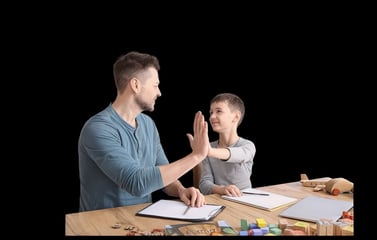

Educational tools for kids with disabilities play a vital role in enhancing their learning experiences and academic success. These tools, which include adaptive software, assistive technology devices, and specialized learning materials, are tailored to meet each child's unique needs. Here’s how they contribute:
Types of Educational Tools for Kids with Disabilities
Adaptive Software
Speech-to-Text Software: Helps children with writing difficulties by converting spoken words into text.
Text-to-Speech Software: Assists children with reading difficulties by converting written text into spoken words.
Educational Apps: Apps designed to support various learning needs, such as math, reading, and language skills.
Assistive Technology Devices
Tablets and Laptops: Equipped with accessibility features and educational apps to support learning.
Interactive Whiteboards: Enhance visual learning and engagement in the classroom.
Augmentative and Alternative Communication (AAC) Devices: Help children with communication difficulties express themselves more effectively.
Specialized Learning Materials
Braille Books and Resources: Support visually impaired children in reading and learning.
Manipulatives: Physical objects like counting blocks or tactile letters that aid in hands-on learning.
Visual Schedules: Help children with autism or ADHD understand their daily routines and transitions.
Benefits
Supports Cognitive Development: These tools aid in developing critical thinking, problem-solving, and other cognitive skills.
Fosters Independence: By providing accessible learning methods, these tools empower children to take charge of their education.
Builds Confidence: Tailored learning experiences help children achieve academic success, boosting their self-esteem.
Encourages a Love for Learning: Engaging and interactive tools make learning enjoyable, fostering a lifelong love for education.
By incorporating these tools into their learning environment, children with disabilities can reach their full potential in a supportive and engaging setting.
InclusiveWorld.Blog
Breaking Barriers, Building Bridges
Contact us:
© 2024. All rights reserved.
Follow us

